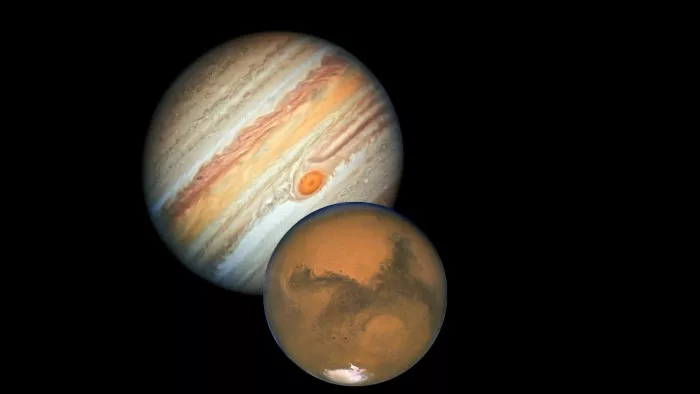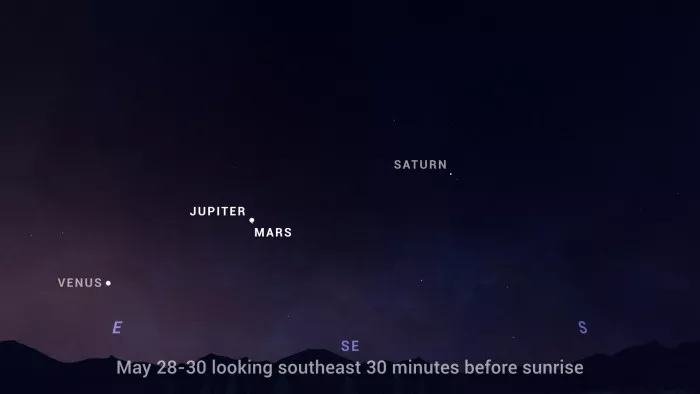Most stargazers will have the opportunity to see Jupiter and Mars surprisingly close in the pre dawn sky on the night of May 27-30. About 45 minutes before sunrise, the two planets will appear about 20 degrees above the horizon in the east southeast sky, opposite Pisces From May 27 to May 30, if there is no local weather problem, the conjunction of Mars and Jupiter will be visible in the pre dawn hours every morning. This conjunction will reach its peak at 3:57 a.m. central time on May 29.

Mitzi Adams, an astronomer and researcher at NASA's Marshall Space Flight Center in Huntsville, Alabama, said: "traditionally, planetary conjunctions are more astrological than serious astronomy, but they never impress people in the observation process, especially when it comes to gas giant planets."
During this rendezvous, the two planets appear very close in the earth's night sky. Conjunctions often occur in the earth's solar system because our sister planets travel around the sun in a fairly similar ecliptic plane, and although they are millions of miles away from each other, they often meet in our night sky.

The sky chart shows the appearance of Jupiter and Mars in the sky before sunrise on May 28-30. Source: nasa/jpl-caltech
In the nearest place, the distance between Mars and Jupiter will not exceed 0.6 degrees. Astronomers usually use degrees to measure the angular distance between objects in the night sky. For observers on the ground, the distance between the two planets will not exceed the width of a finger, and Mars will appear at the bottom right of the giant gas giant.
Alphonse sterling, a NASA astronomer who works with ADAMS in Marshall, said it may be necessary to use binoculars or telescopes to clearly find Mars. But he pointed out that it should not be difficult for observers to recognize Jupiter, even with the naked eye. "We expect Jupiter to shine at -2.2, compared with Mars' magnitude of 0.7." The brightness of a celestial body is measured by its star equivalent, and this number decreases as the brightness increases. A negative value means that the planet or moon is easily visible in the night sky, even with ambient light.
Of course, Mars and Jupiter are millions of miles away from us - when combined, the distance between earth and Mars will be more than 136million miles, while Jupiter is almost four times the distance. Even so, Jupiter will be the brightest of the two. Mars' planet is about 4200 miles in diameter, dwarfing the giant Jupiter, which is about 89000 miles in diameter. Due to its much smaller size, Mars reflects much less sunlight.
Mars also travels faster around the sun. It rotates eastward in our night sky fast enough to leave behind its bulky gas giant Jupiter. Therefore, Mars will catch up with Jupiter again and meet it in another rendezvous in August 2024.